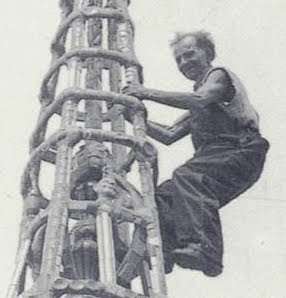14A Orchard Street
January 6–February 12
Walt Cassidy -The Monarch's Cage, 2011.
 Alienation, it would seem, can be a creative force for inclusion. And, as each of the artists in “The Displaced Person” proves, one is rarely found without the other. Freud viewed alienation as the by-product of a cultural divorce between man and his natural impulses. For the artists exhibited, it’s in the very gaps between body and ideology that one finds reconciliation between the two.
Alienation, it would seem, can be a creative force for inclusion. And, as each of the artists in “The Displaced Person” proves, one is rarely found without the other. Freud viewed alienation as the by-product of a cultural divorce between man and his natural impulses. For the artists exhibited, it’s in the very gaps between body and ideology that one finds reconciliation between the two.Performance artist Ron Athey’s installation Foot Washing Set w/ Blonde Hair Towel, 1996, typifies the artist’s melding of religious and BDSM rituals. A nod to the Christian practices of foot washing (see Luke 7:44), Athey’s twist on the tradition includes a handwoven towel made of hair, and a bloodstained cactus-spine brush. Here the body, or rather its sanguineous traces, becomes a symbolic site on which, as with Christian theology, dogma supercedes the physical. In Sue Williams’s My Oeuvre, 2005, the presentation of the body in fragments lays bare perceptual attitudes towards it. A cartoonish bioamorphous mass of sphincters, orifices, and bulbous mounds, Williams’s anatomical fantasy points far less to any recognizable specific sex organ than to collective impressions forced upon them.
With Walt Cassidy’s The Weeping Tower, 2011, the artist examines structures that impose both conformity and alterity on the body. Carbon photographic prints of idyllic male youths, framed within hand-drawn structures, reflect an eroticization of, and dislocation from, the male form. Tellingly, Cassidy’s choice of settings includes New York’s Jacob Riis beach—honoring a man who documented the blight of the industrial era’s downtrodden. Each of the works in this exhibition reminds us that those on the fringe often find themselves center stage.
— Joseph Akel
























































